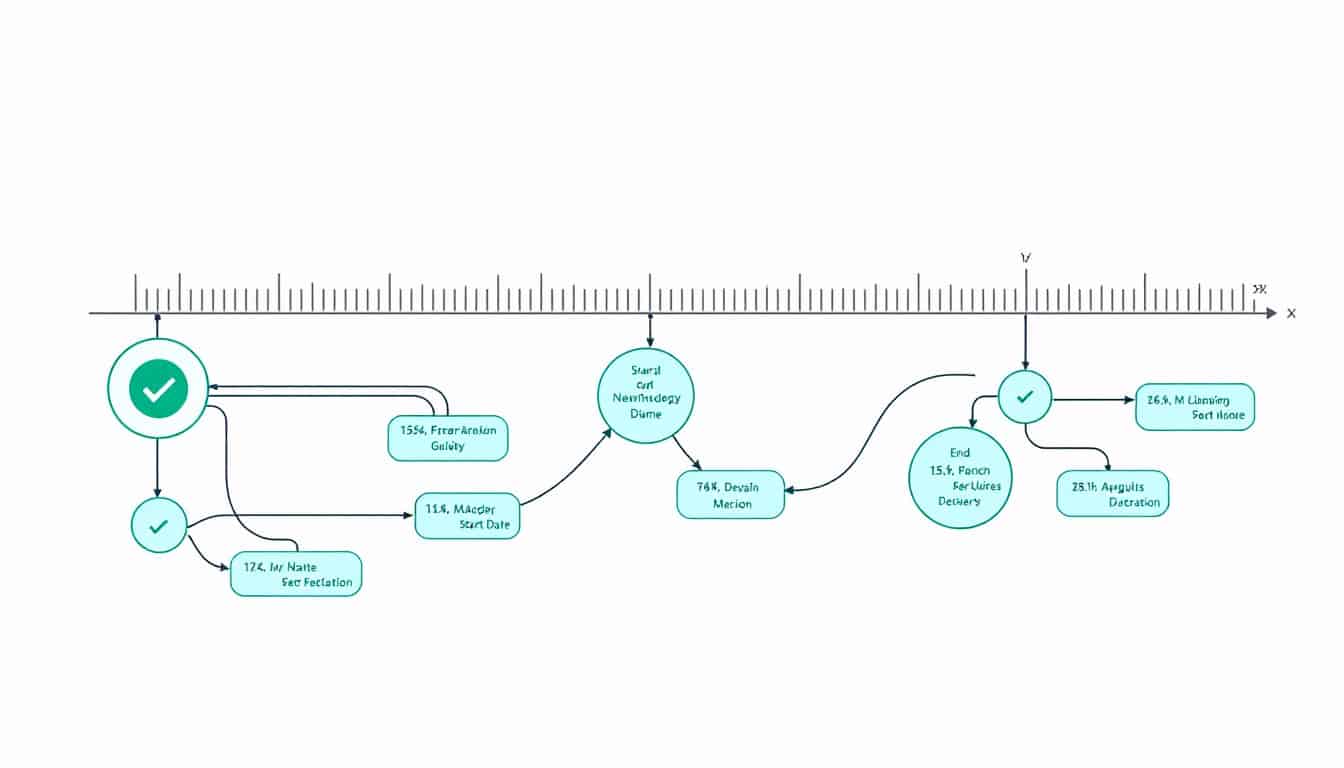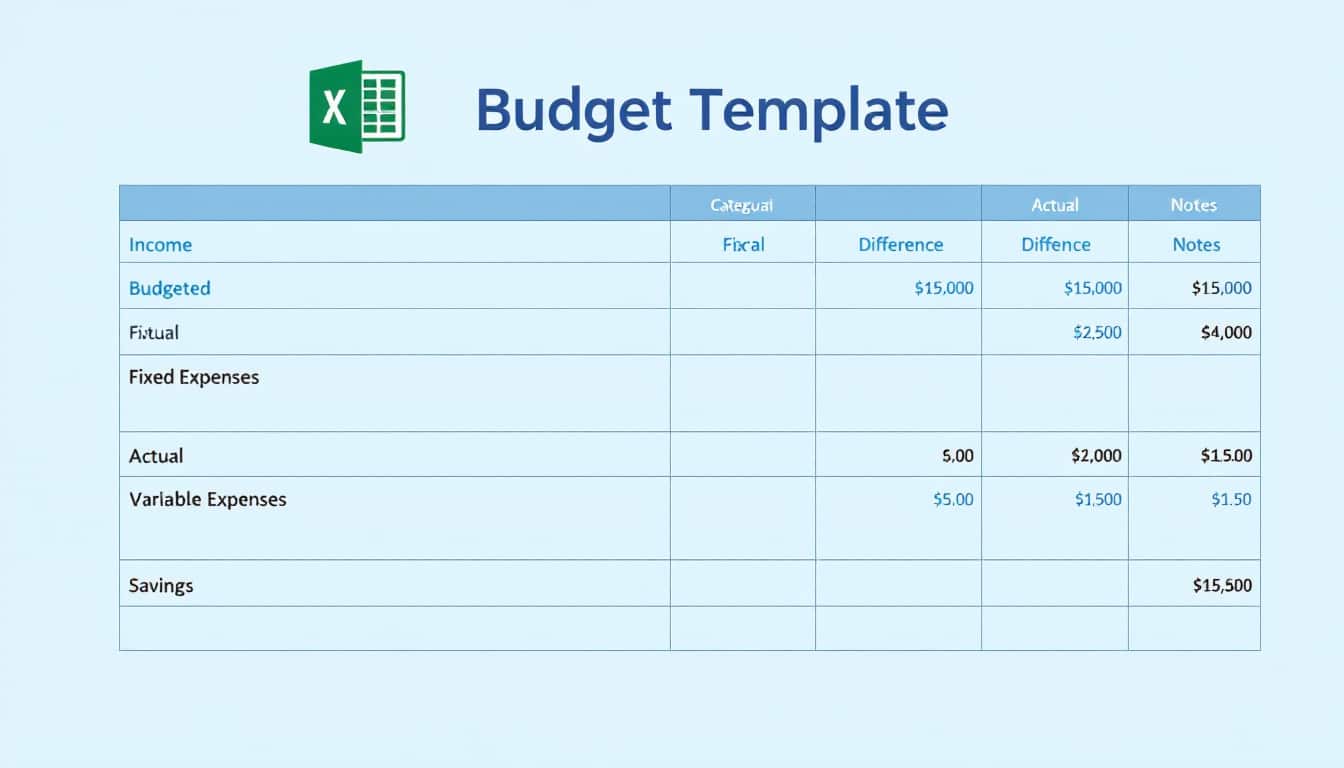Construction projects are often subject to unforeseen events that can disrupt their progress. Understanding the causes of these delays is essential to ensure the success of a project. Effective management of these delays plays a crucial role in meeting established deadlines and budgets.
Analyzing delays allows one to determine who is responsible and to assess the impact of these setbacks on the overall project timeline. Whether due to design issues, adverse weather conditions, or challenges faced by contractors, each delay has its specifics. A delay analysis provides a clear view of the disruptive factors and facilitates informed decision-making to adjust schedules and associated costs.
🔥 Nous recommandons Ideamap
Ideamap est l’outil idéal pour un brainstorming ou un projet collaboratif. Grâce son interface facile et à ses fonctions IA, Ideamap booste votre créativité tout en favorisant une meilleure organisation de vos idées pour atteindre vos objectifs.
A delay analysis involves evaluating and identifying the causes, extent, and consequences of delays in a construction project. This process is essential to determine if the delays are attributable to internal or external elements, such as subcontractor management issues, design changes, or climatic uncertainties. Producing a detailed delay analysis report is often necessary to resolve disputes, manage claims, and decide on the necessary adjustments to the schedule or costs.
The key steps in a delay analysis include collecting all relevant project documentation, such as contracts, initial schedules, and progress reports. It is then essential to determine when delays occurred, their duration, and the impacted activities. These delays are classified into categories: excusable (beyond the contractor’s control), non-excusable (fault of the contractor), or compensable (caused by third parties). Assessing the impact allows one to understand the repercussions on the overall timeline and analyze the underlying causes.
There are several methods for conducting a delay analysis, each providing a different approach to assess the impact on the schedule. Among these, the As-Planned vs. As-Built comparison allows one to juxtapose the initial schedule with the actual progress of the project. The Time-Impact Analysis method anticipates the effect of delays on future activities, while the Longest Path Analysis identifies the most time-consuming activity sequences. Each method has its advantages and can be chosen based on the specifics of the project.
The use of project management software, such as ProjectManager, greatly facilitates conducting delay analyses. With real-time dashboards and advanced planning tools, project managers can track progress, quickly identify sources of delays, and implement effective corrective actions. These tools also offer free templates to help structure analyses and optimize scheduling management.
In conclusion, delay analysis is an essential component of project management in construction. It not only helps to resolve immediate issues but also improves future processes by learning from past delays. Adopting a rigorous approach and using the right tools ensures that construction projects stay on track, meet deadlines, and adhere to budgets.
What is delay analysis in construction?
In the field of construction, projects often face unforeseen events that can lead to delays. Delay analysis involves assessing and determining the causes, extent, and impact of these delays on the overall project timeline. This analysis helps identify those responsible for the delays, whether related to contractors, designs, weather conditions, or external factors.
To conduct an effective analysis, it is essential to gather all relevant documentation, including contracts, schedules, progress reports, and correspondence. This collection of information allows for a precise understanding of when and why delays occurred, as well as their duration and the impacted activities. Once this step is completed, delays can be classified into categories such as excusable (beyond the contractor’s control), non-excusable (fault of the contractor), or compensable (caused by third parties affecting the project).
A thorough analysis not only helps resolve potential disputes but also aids in making informed decisions regarding schedule adjustments, additional costs, and potential penalties. Furthermore, a good understanding of delays allows for the implementation of preventive measures to avoid such incidents in the future, thereby improving the overall efficiency of construction projects.
Why is delay analysis crucial?
Delay analysis plays a fundamental role in managing construction projects. It enables general contractors to understand the root causes of delays and evaluate their impact on the overall project flow. Without such analysis, it would be difficult to determine responsibilities, which could lead to conflicts among the various stakeholders.
Moreover, delay analysis is essential to preserve the project’s profitability. Uncontrolled delays may lead to additional costs, whether in terms of extra labor, prolonged equipment rentals, or contractual penalties. By quickly identifying the causes of delays, project managers can take appropriate corrective actions, thereby limiting negative financial impacts.
Furthermore, a rigorous delay analysis facilitates better communication among stakeholders. By documenting delays and clearly assigning responsibilities, it becomes easier to negotiate deadline extensions or contractual adjustments transparently and fairly. This helps maintain harmonious professional relationships and minimizes potential disputes.
Finally, delay analysis provides valuable lessons for future projects. By understanding what caused delays in a given project, managers can improve their planning and risk management processes, thus increasing the chances of success in subsequent projects.
Delay analysis methods in construction
There are several methods for analyzing delays in construction projects, each offering a distinct approach to assessing the impact of delays on the overall schedule. The selection of the appropriate method often depends on the nature of the project and the specific circumstances surrounding the delays.
As-Planned vs. As-Built Comparison
This method involves comparing the initial schedule (As-Planned) with the actual schedule at the end of the project (As-Built). It allows for the identification of activities that took longer than expected and those that were completed more quickly. This approach highlights discrepancies between the planned versus actual outcomes, thus facilitating the assessment of the impact of delays on the entire project.
Impacted As-Planned Analysis
The Impacted As-Planned Analysis applies the identified delays to the initial schedule without considering changes made during the project. This method helps evaluate the effect of delays on the planned schedule and estimate how these delays could have influenced the project if no adjustments had been made.
Collapsed As-Built Analysis
With this method, the actual schedule is adjusted to exclude delays, thereby creating an “ideal” scenario where the project would have progressed without interruptions. This helps visualize the time saved and understand the impact of delays on the overall project duration.
Time-Impact Analysis
The time-impact analysis evaluates how specific delays affect the remainder of the project schedule. This proactive approach predicts the future consequences of current delays, allowing managers to take corrective actions before new delays occur.
As-Built Critical Path Method
This method involves developing a schedule based on the actual progress of work up to a certain point. It identifies the current critical path and shows how delays have altered key activities, thus providing an accurate view of the project’s current status.
Longest Path Analysis
Similar to the critical path method, this analysis identifies the longest sequence of activities, which may not necessarily be the traditional critical path. This method helps detect significant delays that might otherwise go unnoticed.
Each method has its advantages and disadvantages, and often a combination of several approaches is used to achieve a comprehensive delay analysis. For a detailed understanding of the different methods, refer to this practical guide on the critical path method (CPM) in construction.
How to write a delay analysis report?
A delay analysis report is a detailed document that presents the findings of the delay analysis performed on a construction project. This report is crucial for resolving disputes, managing claims, and making decisions regarding deadline extensions or additional costs.
To write an effective report, it is essential to include several key sections:
Overview of the project schedule
Start by briefly describing the project, specifying its scope, location, main milestones, and overall objective. Include the initial baseline schedule, identifying key dates such as start date, significant milestones, and the planned end date. Also, provide any updated schedule reflecting calendar changes and summarize the critical path and its relationship with project completion.
Description of delay events
List each significant delay chronologically, providing specific dates and the duration of delays. Describe the type of delay and categorize them (excusable, non-excusable, compensable). Where relevant, identify the person or entity responsible for each delay.
Delay analysis methodology
Specify the delay analysis method used, justify this choice, and detail the data sources employed in the analysis, such as schedule updates, project logs, and progress reports.
Impact of delay events
Describe how each delay impacted the critical path and the milestones of the project. Quantify the delays in terms of time and determine whether this caused an extension of the project schedule. If possible, explain how the delays affected project costs, including potential cost overruns, additional labor, extended equipment rentals, or material costs.
Mitigation efforts for delays
Detail the efforts made to mitigate or recover delays. Assess the success of these efforts in reducing the delay or minimizing its impact on the overall project.
Supporting documentation
Include copies of original and updated schedules, highlighting changes due to delays. Add progress reports, any pertinent communication, visual documentation, and, if available, daily site logs.
For more information on preparing reports and other aspects of project management, refer to this resource on project deliverables.
Tools and software for delay analysis
The use of project management tools can greatly facilitate delay analysis in construction. These software solutions offer advanced functionalities for planning, monitoring, and managing projects effectively, thereby reducing the risk of delays and improving the accuracy of analyses.
ProjectManager is an example of an award-winning project and portfolio management software that allows tracking progress in real-time through interactive dashboards. These dashboards provide an overview of the project, helping to quickly identify the causes of delays and address them. Clear charts and tables display key performance indicators (KPIs) such as time, costs, and workload, enabling managers to compare actual progress with initial forecasts.
Additionally, ProjectManager offers robust Gantt chart creation features, making it easier to plan and track tasks and subtasks of the project. These charts allow linking dependencies between tasks, thereby avoiding delays and cost overruns. By filtering to display the critical path, managers can quickly identify essential tasks and their current status.
In addition to project management software, free templates can also be used for delay analysis. These templates for Excel and Word cover various aspects of project management, facilitating the collection and analysis of delay-related data. However, for dynamic projects, collaborative tools like ProjectManager are preferable as they allow for real-time updates and better coordination among teams.
To discover how tools like ProjectManager can transform your project management, check out this quantity assessment in construction.
Tips to minimize delays in construction
Minimizing delays in construction requires a combination of good planning, effective communication, and proactive risk management. Here are some essential strategies to reduce the risk of delays and ensure the smooth execution of projects:
Detailed planning: A well-thought-out schedule is the foundation of a successful project. It should include all tasks, deadlines, required resources, and dependencies between activities. Use tools like Gantt charts to visualize the calendar and identify the project’s critical path.
Resource management: Ensure that both human and material resources are available and properly allocated throughout the project. Use resource management tools to track team availability and avoid overload or underemployment.
Effective communication: Maintain open and regular communication with all project stakeholders. Frequent meetings and regular updates help quickly detect potential problems and take immediate corrective action.
Proactive risk management: Identify potential risks early in the project and develop contingency plans to address them. This includes considering weather conditions, design changes, or delays in material deliveries.
Continuous monitoring and control: Use project management software to monitor work progress in real-time. Regularly compare actual progress with the initial schedule and adjust resources or tasks as necessary to stay on track.
Training and development: Invest in training your teams to improve their skills and efficiency. Well-trained teams are more capable of quickly resolving issues and maintaining project momentum.
By applying these tips, project managers can significantly reduce the risk of delays and ensure that construction projects run smoothly. To deepen your knowledge of planning and management methods, refer to this guide on the critical path method (CPM).
Case studies: Successful delay analyses
To illustrate the importance and effectiveness of delay analysis, let’s examine some case studies where construction projects overcame challenges through rigorous delay analysis:
Case Study 1: Construction of a shopping center
A shopping center under construction faced delays due to material delivery issues and adverse weather conditions. By using a Time-Impact Analysis method, project managers were able to identify critical periods where the delays had the most impact. Through schedule adjustments and better resource allocation, they managed to reduce the overall delay and complete the project almost on the planned date.
Case Study 2: Extension of a residential complex
During the extension of a residential complex, unforeseen design changes caused significant delays. An As-Planned vs. As-Built analysis allowed for comparing initial schedules with actual progress, highlighting failures in coordinating design changes. In response, managers strengthened communication between design and construction teams, thereby minimizing future delays and improving project efficiency.
These examples demonstrate how a well-conducted delay analysis can help identify the root causes of delays and implement effective solutions to overcome them. By using appropriate tools and methodologies, project managers can transform potential challenges into opportunities for continuous improvement.
Although construction is subject to various types of delays, an in-depth delay analysis allows for understanding their causes, assessing their impact, and taking effective corrective action. By adopting appropriate methodologies and using advanced project management tools, managers can not only minimize delays but also enhance the profitability and overall success of their projects.
To maximize the effectiveness of your analyses and manage your projects optimally, consider using solutions such as ProjectManager. Discover how these tools can transform your approach to managing delays by visiting this resource on project deliverables.














